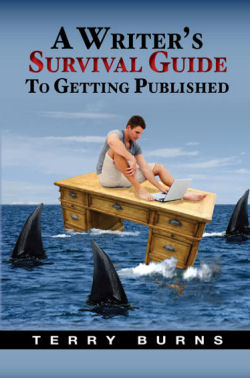|
“My
project is good enough to publish, so
why does no agent want to represent it or no editor want to publish
it?” the frustrated author asked the panel. Good question.
Several things are involved, and
the first is competition. I’ve said
before that we agents receive hundreds of submissions a month, and a
large number of them are good enough to be published. That means good
is just not good enough, it takes exceptional. If your manuscript is
really good but it is sitting there beside one or more that are simply
better, that editor or agent is going to go with better. It’s just how
things work.
It is not about judging you or
judging your work, it is simply the
editor or agent picking the best offering. That brings taste into the
discussion. Things I really like might not be to someone else’s taste.
I have editors whom I really like and who like me, but I have never
sold them anything. Our tastes are too dissimilar. I have other editors
I sell to all the time because we have very similar tastes. This is the
second factor an author is up against when submitting: is your work
something that will appeal to the particular taste of the editor or
agent? Not a question of whether your work is good or bad, but whether
it fits within their tastes.
The next factor is “does is fit
the slot?” A particular editor is
probably trying to fill a catalog slot. He or she is looking for
something specific, and an author’s work may or may not fit the
criteria at that particular time. Again, does it mean the manuscript is
being judged up or down? No, it just isn’t what the editor is looking
for at that time, so out comes the dreaded “This is not a fit for us”
letter. You can multiply that by multiple editors for the agent. It’s
our job as agents to try to know what editors are looking for so we
asking the same question, “This is good, but does it fit what some of
the editors are looking for?”
The kind of manuscript it is can
affect whether it fits the slot.
Projects that neatly fit in some genre, style, or category are easier
for an editor or agent to deal with. They are easier to sell, but such
books also tend to be a bit average and are seldom a blockbuster or a
best seller. The manuscript that stretches the envelope is the one that
becomes a best seller, but they are also much harder to place, as a
rule. Some editor has to take a chance on it. And the agent has to know
that editor.
|
Not
just any editor is in a position to
gamble. A banker who makes several bad loans will find himself out of
work. Editors who have too many titles that do not perform are in the
same situation. If an editor has just hit one out of the park and is
languishing in the limelight of bringing a best seller to the market,
she is in a position to take a chance on something else. Others are
probably looking for proven titles that they feel comfortable that
their reader base will be interested in buying. Agents are looking for
what these editors are interested in publishing, and we try to know
what that is.
So you see it isn’t black and
white, it isn’t a simple this is good
or this is not good, it’s subjective. All of these factors, plus many
more, come into play. The largest factor, however, is for the author to
write an exceptional book that flows beautifully from cover to cover so
it can compete well against the other titles. When those comparisons
are made, we need to put ourselves in the position of being the top
title.


|









